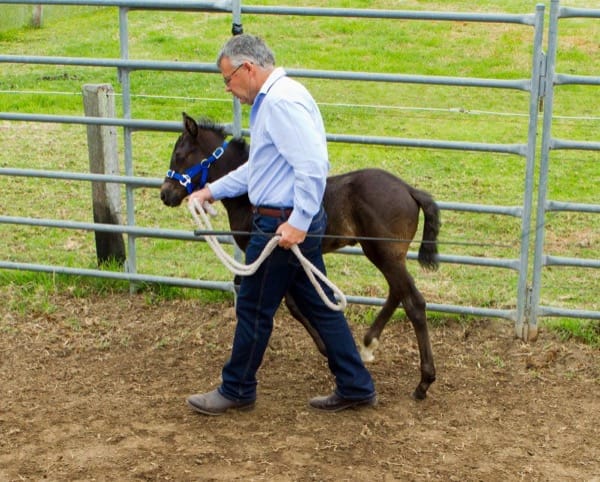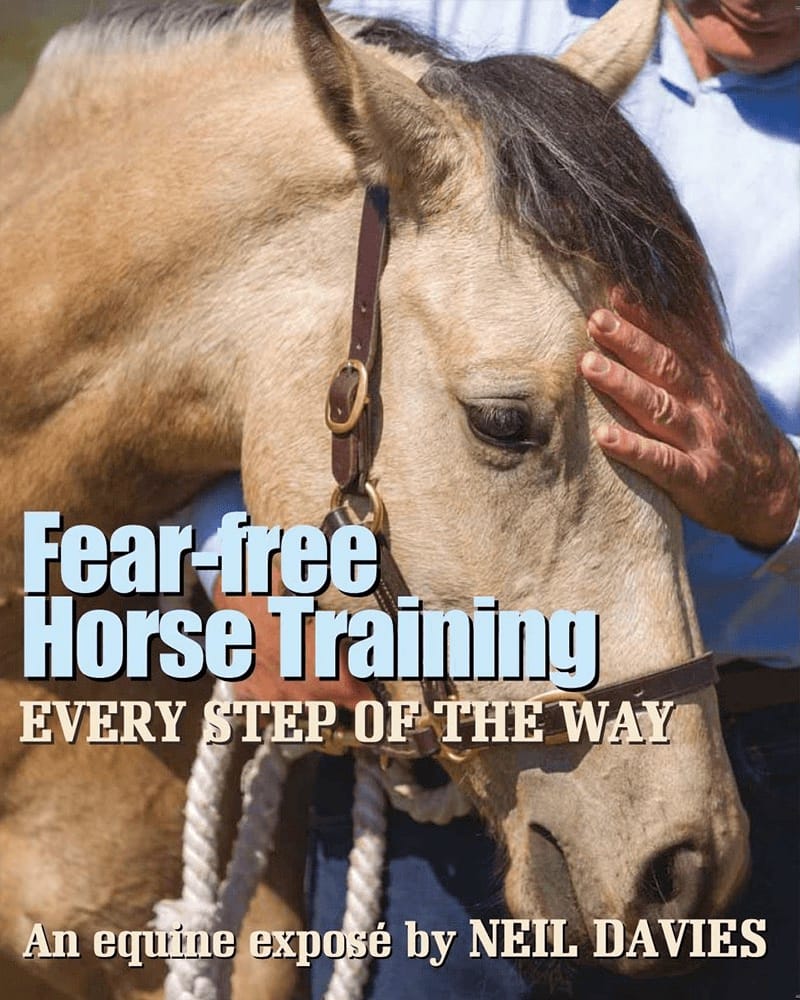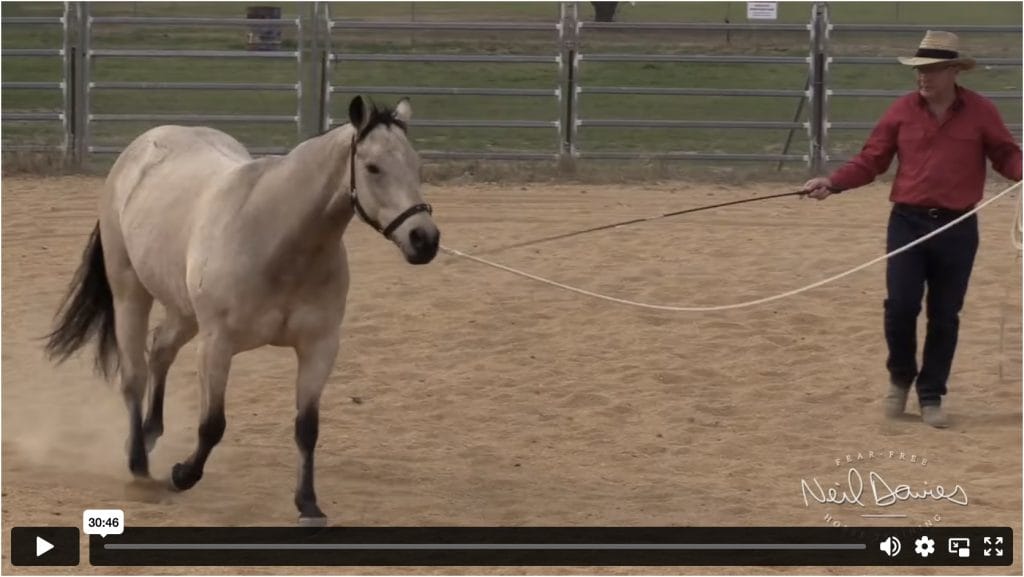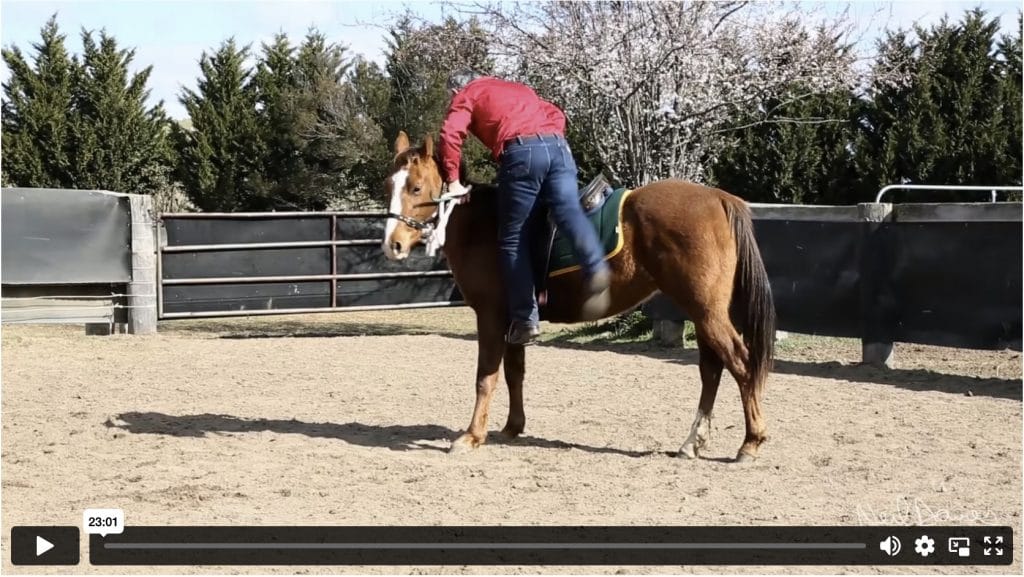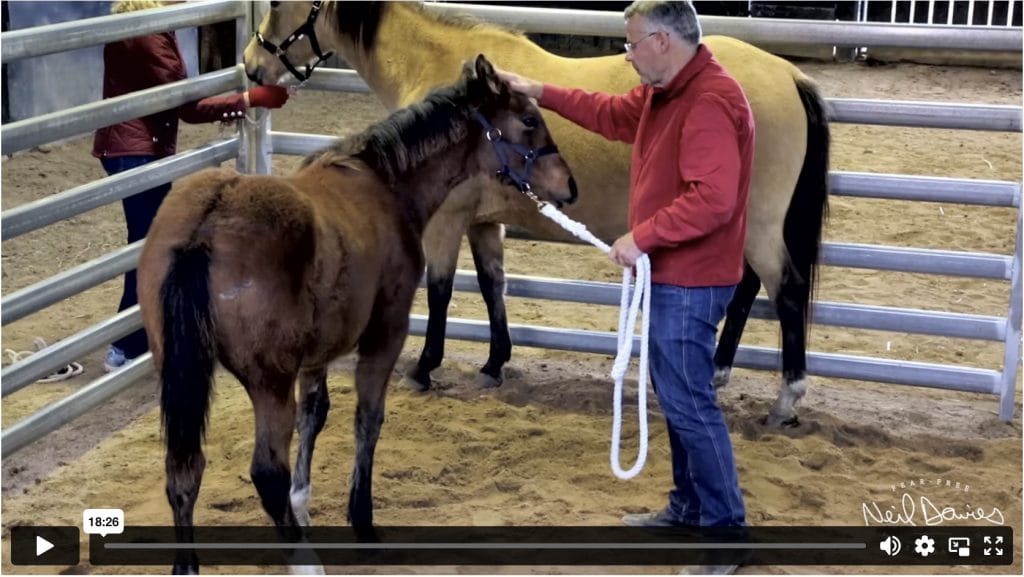Everyone wants to be able to lead their horse calmly alongside.
Nobody wants their horse to hang back or rush in front or pull away or run over the top of them.
Some trainers say humans have a bubble around them that horses aren’t allowed into.
Last time I looked, I didn’t have a bubble around me and no amount of chasing or harassing any horse will make him see any bubble around any human.
When a horse pushes over you or rushes forward and drags you along, he’s simply telling you that he doesn’t understand what you want him to do.
Horses aren’t born knowing that they must walk smoothly along at your shoulder.
Horses don’t know that they shouldn’t push over the top of their handler.
Just like everything else, you must teach your horse to lead as you want him to.
It’s not a matter of gaining his respect or forcing him to submit.
It’s simply a matter of teaching your horse what you want him to do.
A horse that drags along behind or rushes forward or pulls away or pushes over his handler is telling you that he’s not confident and relaxed.
It’s nothing to do with ‘respect’ or the horse ‘invading your personal space’.
Such a horse has never had consistency in his training.
One minute he’s allowed to run, the next minute he’s allowed to walk.
He’s allowed to push over the handler or to rush ahead or pull away.
From the horse’s point of view nothing’s definite, so he can’t relax.
The handler must have an exact circle in mind where and how he wants the horse to walk.
When the horse walks this circle, life is easy and pleasant.
When there’s a variation to the circle, the handler must make things a little unpleasant for the horse.
Horses aren’t stupid, they’ll take the easy option every time.
It won’t take long for a horse to work out that all he has to do is walk a simple circle and life is easy and pleasant.
There’s no need to be heavy handed.
Remember that every horse – from a 17hh thoroughbred to a 12hh pony – is much stronger than you and me.
Regardless of the horse’s age or size, I use the same approach.
I always start in a 20ft square yard and teach the horse to walk exactly where I want, at the exact speed I want.
At first the horse will run anywhere, anyhow because that’s what he’s learned to do.
I show the horse that it’s easy and pleasant to walk as I ask and slightly unpleasant when he doesn’t.
Immediately the horse takes one step faster than I want, I correct him by applying pressure on the headstall.
Immediately he slows to the speed I ask, I give and make it easy for him to walk at my speed.
You must correct your horse immediately you feel him speed up or move off line.
If your horse runs past you before you correct him, you’ve allowed him to take at least ten steps you didn’t ask for.
That’s ten steps too many.
In every training situation, one unasked for step is one step too many.
There’s absolutely no need and certainly no benefit in forcing any horse to run backwards in this situation.
Leading correctly and backing up are two unrelated exercises that every horse should be taught.
When a horse is confident and relaxed and leading as you ask, you can teach him to back up a few steps.
Remember, backing up is not a punishment to be used if your horse isn’t doing as you ask.
And backing up has nothing to do with leading your horse.
When a horse is confident and relaxed, backing up is just another movement that he can learn.

